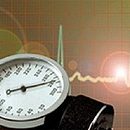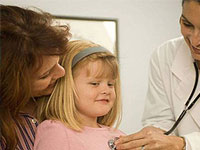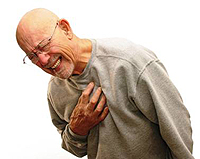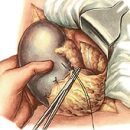Why occurs and how the inflammation of the cardiac bag is treated - pericarditis? What are the measures to prevent this ailment? You will learn about this by reading this article.
Content
Pericardis is a two-layer bag, enveloping the heart. Outdoor (fibrous pericardium) passes at the base of the heart on large artery and veins, and in the area of the top, it forms a sternum-pericardial bundle, with which the pericardial bag is attached to the ventral part of the diaphragm. In the pericardial bag there is serous fluid.
Pericard performs very important functions: prevents the sudden expansion of the heart chambers during exercise. Due to the development of negative pressure inside the pericardium, at the time of expulsion, the atrial filling during ventricular systole is improved.
Pericardy also limits the anatomical position of the heart, minimizes friction between the heart and the surrounding tissues, prevents the displacement of the heart and twisting the large vessels and, possibly, prevents the spread of infection from light and pleural cavities to the heart.
Pericarditis is an acute or chronic pericardium inflammation.
Pericarditis in their form are:
- Exudative (accompanied by the accumulation of fluid in the cavity of the heart bag and the syndrome of the heart of the heart);
- Fibrinic (dry, fluid in the pericardia cavity is absent, pericarditis is characterized by acute pain in the heart);
- Constructive (squeezing).
Exudative or empty pericarditis is an inflammatory heart bag (pericardium), which is accompanied by an increase in the amount of fluid in the cavity of the heartbag. Normally, 20-30 milliliters of fluid are in the norm between the leaflets of the pericardia in the cardiac bag. With an exudative pericardia, its number increases to 200-300 milliliters and more.
In case of acute fibrinous pericardis in the pericardia cavity, fibrin is postponed, which is normal in the base of the blood clots, stopping bleeding, for example, when skin cut. The fibrinous pericarditis in most cases ends with recovery, while accumulated in the pericardia of the pericardium fibrin is absorbed.
In some cases, after the transferred fibrinous pericarditis, there is a complete commissioning of the pericardium cavity with its replacement cloth. In this case, pericardium becomes dense and thickened (up to 3 cm), lime spots appear. Such pericardium grows with a heart and begins to squeeze it: so developing (squeezing) pericarditis develops.
Causes of pericarditis:
- The impact of various kinds of infections (tuberculosis infection is the most common cause of chronic resistance pericarditis);
- as a complication of noncommunicable diseases;
- as a result of the lack of kidney function;
- due to various violations of the body's immune system;
- Due to the injuries of the heart.
The occurrence of pericarditis, more often adhesive, possibly after radiation therapy (X-ray irradiation) of the chest organs in oncological patients.
 Assign bedding. When paying, pericardia is especially important to take care of the convenient position of the patient in bed. Drug treatment depends on the cause that caused pericarditis. To eliminate pain caused by sharp pericarditis, acetylsalicylic acid is usually used. In severe pains can be used narcotic drugs.
Assign bedding. When paying, pericardia is especially important to take care of the convenient position of the patient in bed. Drug treatment depends on the cause that caused pericarditis. To eliminate pain caused by sharp pericarditis, acetylsalicylic acid is usually used. In severe pains can be used narcotic drugs.
To reduce the formation of effusion (liquid) with noncommunicable exudative pericarditis, as well as during pericardits caused by impaired immune system, the so-called non-steroidal anti-inflammatory funds are prescribed, as well as hormonal drugs for a short time.
For the treatment of bacterial and fungal pericardits, appropriate antibiotics are used.
In the case of purulent pericarditis, it may additionally be necessary to formulate a drainage in the pericardium cavity for the outflow of Mouth and the introduction of antibiotics.
With a constrictive pericardia, accompanied by pronounced blood circulation disorders in the body, removal of the changed pericardium (pericardectium) is required. The operation allows you to almost completely eliminate disorders associated with this disease.
Preventive measures can be reduced to hardening the body, as well as to the timely identification of diseases complicating the development of pericarditis.









